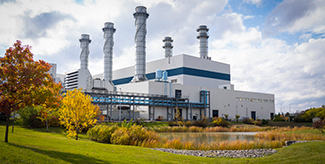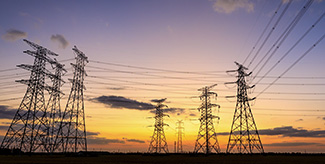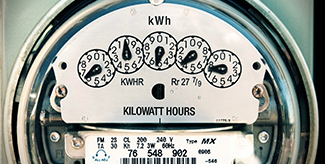Powering Our Future: A Closer Look at The Incredible Electricity Grid
Energy is the backbone of our modern world. It lights up our homes, fuels our economy and industries, and supports essential services like hospitals. Out of sight for most, the electricity grid is at the heart of this energy ecosystem, ensuring a steady power supply to consumers 24/7.
What Is the Electricity Grid?
The electricity grid is an interconnected network of power plants, transmission lines, and distribution systems that deliver electricity from where it’s generated to where it’s needed. Currently, significant amounts of energy cannot be stored and so electricity must be produced as it is used. As a result, the power distribution grid must respond quickly to shifting demand and continuously generate and route electricity to where it’s needed the most.
The electricity grid’s physical infrastructure consists of three main components:

Power Plants:
Power plants are the foundation of the electricity grid. This is where various energy sources are converted into electricity. These plants can be centralized, generating enormous amounts of power, or distributed, generating smaller amounts closer to the end users.
This is the role we play – check out our fleet of power plants!

Transmission Lines:
Transmission lines are like the “arteries” of the grid. These are what carry electricity from power plants to substations. Tall towers often support these lines and span long distances, sometimes even crossing provincial/state or national borders.

Distribution Systems:
Distribution systems are the network of lower-voltage lines delivering electricity from substations to homes, businesses, and other end users. These lines are typically smaller and more numerous than transmission lines and form a web-like structure that reaches all our communities.
The Journey of Electricity:
The electricity journey begins at power plants, where various energy sources, such as natural gas, coal, hydroelectricity, nuclear power, wind, and solar, are converted into electricity. This electricity is sent through high-voltage transmission lines, spanning long distances, to reach local substations.
At substations, transformers step down the high voltage to a safer and more manageable level for distribution. Distribution lines carry electricity to homes, businesses, and other end users. Finally, electricity enters homes and buildings through service lines, where it powers our everyday lives.
The Grid and the Energy Transition:
The state of our electricity grid is intrinsically linked to the energy transition and the goal of achieving net-zero emissions. McKinsey recently observed that an upgraded and expanded electric grid will be, “… the backbone of the energy transition—and a requirement of any realistic decarbonization pathway.”
A modernized grid can also integrate renewable energy more effectively. Renewable resources are also known as intermittent resources because the energy sources are not continuously available and because of external factors (like weather conditions and regional geographies) cannot be controlled or fully planned for. Wind, solar, and tidal power are all examples of intermittent resources. As a result, renewables alone pose a challenge for grid operators, who need to ensure a consistent and reliable electricity supply.
Dispatchable resources, in contrast, are from energy resources that are always available and can be turned on and off at will. These are essential to supply baseload power (which is the minimum amount of electricity needed at any given time). Dispatchable electricity comes from sources that are available 24/7, like natural gas, coal, hydro, and nuclear power. This is how we ensure we always have a stable energy supply.
Capital Power’s Commitment:
At Capital Power, we’re committed to net zero by 2045 and create innovative electricity solutions to electrify the world reliably and affordably. We currently steward approximately 7,500 MW of power generation capacity at 29 facilities. This enables us to deliver power to communities responsibly.
Capital Power collaborates with partners across the industry to develop innovative solutions for a cleaner and more resilient grid. Our commitment to reliability, affordability, and decarbonized power is helping shape the future of electricity.